Special forces of seven thousand islands
Almost since the end of the Second World War in the country is sluggish civil war. The government of the Philippines has two main opponents, who prefer to talk to the authorities in the language of partisan war. Firstly, these are communist guerrillas - armed Maoist and Trotskyist units fighting for the establishment of a communist state in the Philippines. The largest such formation is the New People’s Army of the Philippines (NNA). Secondly, these are the nationalist and religious armed organizations of the so-called “Moro” (“Moors”) - Filipino Muslims who compactly live in the south of the country and advocate autonomy, or even complete independence from the central government.
The lengthy civil war that the Communists, separatists and Islamists have waged against the central government creates many problems for the Philippine leadership. To begin with, it does not control a number of inland areas on some islands, where so-called “liberated territories” exist. Secondly, the presence of thousands of armed opposition in the country is always a very serious threat to the existing political system. That is why the Philippine authorities have always paid the most serious attention to the organization, training and arming of army and police units, designed to confront a dangerous internal enemy - partisan groups.
prehistory
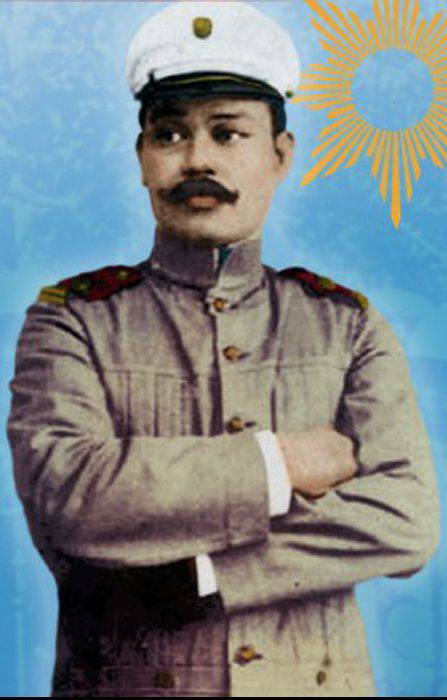 In fact, the prototype of the Philippine special forces appeared more than a hundred years ago. As you know, at the turn of the XIX-XX centuries. The people of the Philippines fought first against the Spanish colonialists, and then against the Americans. The forceful superiority of the American army forced the Philippine revolutionary command to review the basics of the tactics of its units and create units oriented towards the partisan type of warfare. At the root of these divisions stood General Antonio Luna de San Pedro (1866-1899) - a pharmacist by profession, who became famous, nevertheless, as a talented military leader and organizer of the armed forces. He was the creator of the first Philippine National Military Academy. General Antonio Luna created the Strelka Luna unit, the backbone of which was the former Filipino soldiers who served in the Spanish army and went over to the side of the revolution. They were more prepared than the fighters of the other revolutionary units. 11 February 1899, eight infantrymen who had previously served in the Spanish army, were recruited into the Philippine army. Later the squad grew in numbers. The "arrows of the moon" became famous for their courage and combat training during the numerous battles of the Philippine-American war. During the battle of Paye 18 on December 1899, it was they who killed American General Henry Lawton.
In fact, the prototype of the Philippine special forces appeared more than a hundred years ago. As you know, at the turn of the XIX-XX centuries. The people of the Philippines fought first against the Spanish colonialists, and then against the Americans. The forceful superiority of the American army forced the Philippine revolutionary command to review the basics of the tactics of its units and create units oriented towards the partisan type of warfare. At the root of these divisions stood General Antonio Luna de San Pedro (1866-1899) - a pharmacist by profession, who became famous, nevertheless, as a talented military leader and organizer of the armed forces. He was the creator of the first Philippine National Military Academy. General Antonio Luna created the Strelka Luna unit, the backbone of which was the former Filipino soldiers who served in the Spanish army and went over to the side of the revolution. They were more prepared than the fighters of the other revolutionary units. 11 February 1899, eight infantrymen who had previously served in the Spanish army, were recruited into the Philippine army. Later the squad grew in numbers. The "arrows of the moon" became famous for their courage and combat training during the numerous battles of the Philippine-American war. During the battle of Paye 18 on December 1899, it was they who killed American General Henry Lawton. In the Philippine Revolutionary Army, there was one more such unit, the Rosendo Simone de Paharillo squad. It was created from ten volunteers enlisted in the Philippine army. Later, the size of the detachment increased to 50 people and he switched to guerrilla operations in the territory occupied by American troops. Finally, not to mention the squad "Black Guard", commanded by Lieutenant Garcia. This partisan sabotage formation in 25 was also created by the initiative of the Moon. The tasks of the Black Guard included the commission of sabotage raids to the rear of the enemy. Despite the fact that Luna repeatedly proposed to increase the size and strength of the detachment, Lieutenant Garcia refused, preferring to work with his usual personnel.
Ranger Scouts - "Men in Black"
After the independence of the Philippines, the first units of the Philippine special operations forces began to form in the middle of the twentieth century precisely to fight the rebels in the jungle of the "seven thousand islands". They were created as part of the Philippine army (ground forces). The anti-partisan war became the main profile of the Filipino "commandos", their business card, because for almost seven decades of incessant confrontation with the communist and then Islamic partisans, the Filipino soldiers and officers have gained serious experience in this matter. One of the best anti-guerrilla units in the world is considered to be the First Regiment of Scout Rangers. It was founded on November 25 1950, under the command of Raphael M. Ileto (1920-2003). The name of the regiment was taken in honor of the American Rangers and Filipino scouts who were in the US service. The task of the regiment was the opposition of the People’s Anti-Japanese Army (Hukbalahap) - a partisan armed formation controlled by the Communist Party of the Philippines.
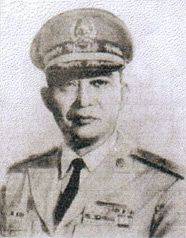 Rafael M. Ileto, the first commander of the Philippine Rangers, after graduating from school entered the University of Philippines in engineering, but after two courses he transferred to the Military Academy of the Philippines, and then to the US Military Academy at West Point in a foreign cadet program. In 1943, Ileto completed an accelerated training course and was promoted to second lieutenant in the 1 Philippine Infantry Regiment deployed in the state of California. Later, the regiment was transferred to the New Guinea jungle, where Ileto continued to serve in the ranks of the famous Alamo scouts. He participated in numerous battles in New Guinea, on the Philippine Islands. In 1947, he was transferred to Okinawa, but he soon retired.
Rafael M. Ileto, the first commander of the Philippine Rangers, after graduating from school entered the University of Philippines in engineering, but after two courses he transferred to the Military Academy of the Philippines, and then to the US Military Academy at West Point in a foreign cadet program. In 1943, Ileto completed an accelerated training course and was promoted to second lieutenant in the 1 Philippine Infantry Regiment deployed in the state of California. Later, the regiment was transferred to the New Guinea jungle, where Ileto continued to serve in the ranks of the famous Alamo scouts. He participated in numerous battles in New Guinea, on the Philippine Islands. In 1947, he was transferred to Okinawa, but he soon retired. In 1950, Ileto recovered in the Philippine army. An educated officer with decent combat experience was assigned to create and lead the 1 th regiment of Ranger Scouts. Captain Ileto served as commander of the unit until 1955, and later made a swift military career. Ileto served as a staff officer, chief of operations of the National Intelligence Coordination Agency, deputy chief of staff for intelligence, deputy chief of staff and deputy chief of staff, deputy defense minister of the Philippines.
The first commander of scout rangers, Captain Ileto, was given the task of selecting the best and most suitable soldiers and officers of the Philippine army to serve in the special forces. They underwent accelerated training in American commando programs and under the guidance of American instructors. The battalion commanded by Ileto was divided into two divisions. The first proceeded to the study of the methods of the enemy's actions - the communist partisans, and the second - served as intelligence for the army units. Each team of scout rangers had a commander in officer or sergeant rank, medical worker, guide, radio operator and gunner. The scouts rangers observed the places of deployment and the movement of the partisans, after which they handed over the received information to the army command.
Later, the Rangers switched to sabotage tactics against partisan movements. They used partisan tactics in the fight against partisans, and this brought some fruit. The Ranger "Five" worked in isolation from the main base and acted at its own risk. Her tasks included the reconnaissance and surveillance of partisans, attacks on partisan patrols, weapons and ammunition. However, such activity seemed too risky - the Rangers began to incur serious losses and the commander Ileto decided to transfer them exclusively to the fulfillment of reconnaissance tasks.
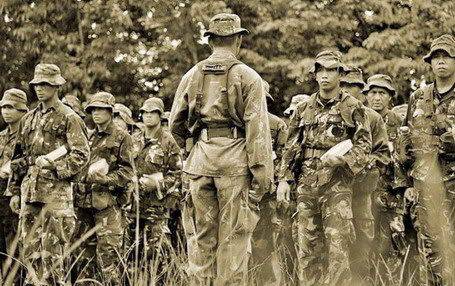 An important activity of the rangers in the 1950-ies. was the implementation of reconnaissance and sabotage operations under the guise of the partisans themselves. The saboteurs acted in the uniform used by the communist partisans and infiltrated the guerrilla units. Since the partisans in those years had a bad communication system, practically there was no communication between the separate formations, it was not difficult to impersonate retreating rebels from other divisions. Rangers skillfully used this and under the guise of guerrillas carried out operations to collect intelligence data, kidnapping prominent guerrilla commanders.
An important activity of the rangers in the 1950-ies. was the implementation of reconnaissance and sabotage operations under the guise of the partisans themselves. The saboteurs acted in the uniform used by the communist partisans and infiltrated the guerrilla units. Since the partisans in those years had a bad communication system, practically there was no communication between the separate formations, it was not difficult to impersonate retreating rebels from other divisions. Rangers skillfully used this and under the guise of guerrillas carried out operations to collect intelligence data, kidnapping prominent guerrilla commanders. However, later the scout rangers regiment was disbanded, which was aided by the suspicion of preparing for the military coup of some officers and soldiers of the regiment. The regiment was disbanded, and the soldiers and officers were transferred to a special war brigade. In 1960 - 1970 - s. It was this unit that carried out the main functions of the Philippine Army Special Forces. The traditions of scout rangers as scouts and saboteurs of top-class were practically lost. Meanwhile, the domestic military-political situation has seriously deteriorated in the country. First, instead of “Hukbalahap”, a new people's army was created, gaining popularity among the peasant population and feeding itself with the “urban appeal” of students sympathetic to Maoism. Secondly, in the middle of the 1970s, a new serious adversary was activated - the Islamic national liberation movement, which advocated the creation of a sovereign state of Moro - Filipino Muslims. In connection with these trends in the political life of the country, the Philippine military commanders increasingly began to turn to the idea of recreating a regiment of scouts - rangers, who effectively proved themselves in the 1950-s. In 1983, it was decided to recreate the 1 regiment of scout rangers. He almost immediately entered into an active confrontation with the militants of the New People's Army, but was no longer used as an reconnaissance and sabotage unit, but as an air assault regiment. However, gradually there was a return to the old tried tactics of reconnaissance and sabotage operations. However, in 1989, the officers of the regiment again participated in the preparation of the next military coup. The conspirators were arrested, among them was the then regimental commander Daniel Lima. But this time the regiment did not disband, although they made serious purges of the commanding staff.
Currently, the scout ranger regiment is one of the elite units of the Philippine army. He is a member of the Special Operations Command. The structure of the regiment includes the headquarters and the four battalions of the three-tier structure. In addition, the regiment includes twenty separate mouths. Each individual company is subordinate to the regional command of the area, however it can be attached to the ranger scout battalion. The company, in turn, is subdivided into teams of five fighters — the commander (officer or sergeant), physician, radio operator, ranger, and scout. The total number of Ranger Scouts reaches 5 thousands of soldiers and officers.
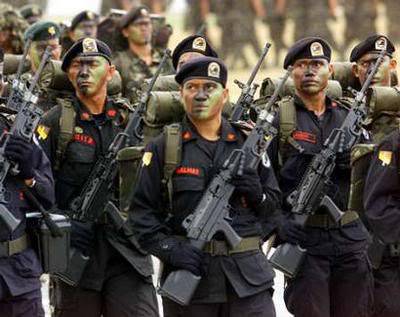 A regiment of scout rangers is recruited by recruiting candidates from among the draftees or military personnel of the Philippine army. Candidates must meet the requirements for health reasons, psychological and physical preparedness for service in special units. A significant part of those who wish is eliminated at the initial stage of selection and preparation. The first part of training is devoted to physical training and the study of actions with weapons, followed by a course of fire training, medical knowledge, topography, orientation in the jungle. Training a fighter - a ranger lasts six months. At the final stage, something like an internship and an exam takes place in a combat situation at the same time. Recruits are promoted to the jungle, to areas of real activity of partisan groups and take part in hostilities. Thus, they are run-in and show commanders what they are capable of under real combat conditions. After the successful completion of the six-month course, his candidates will receive a military specialty of a light diver, an artillery spotter, an aeronautical engineer, an agent for conducting intelligence. Those who have passed all tests and recruits enrolled in the regiment are handed the black beret of the ranger. The camp where scout rangers are trained is located in Texon in San Miguel in the province of Bulacan. The regimental commander is currently Brigadier General Eduardo Davalan.
A regiment of scout rangers is recruited by recruiting candidates from among the draftees or military personnel of the Philippine army. Candidates must meet the requirements for health reasons, psychological and physical preparedness for service in special units. A significant part of those who wish is eliminated at the initial stage of selection and preparation. The first part of training is devoted to physical training and the study of actions with weapons, followed by a course of fire training, medical knowledge, topography, orientation in the jungle. Training a fighter - a ranger lasts six months. At the final stage, something like an internship and an exam takes place in a combat situation at the same time. Recruits are promoted to the jungle, to areas of real activity of partisan groups and take part in hostilities. Thus, they are run-in and show commanders what they are capable of under real combat conditions. After the successful completion of the six-month course, his candidates will receive a military specialty of a light diver, an artillery spotter, an aeronautical engineer, an agent for conducting intelligence. Those who have passed all tests and recruits enrolled in the regiment are handed the black beret of the ranger. The camp where scout rangers are trained is located in Texon in San Miguel in the province of Bulacan. The regimental commander is currently Brigadier General Eduardo Davalan. The regiment of the special forces of the Philippine army
The needs of the Philippine army in special operations forces in the 1960-ies. led to the creation of another elite division of the ground forces, which, unlike the Rangers, was originally focused not only on the anti-partisan war, but also on conducting reconnaissance and sabotage operations in the rear of the likely enemy, the implementation of other operations in the framework of a non-traditional war. 25 June 1962 was created by the Special Purpose Regiment, at the head of which stood Captain Fidel Ramos.
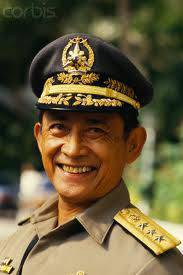 The first commander of the special-purpose regiment, Captain Fidel Ramos (born 1928), was one of those special forces who were fortunate enough not only to make a serious career in the army, but also to make a completely dizzying career "in civilian life" - from 1992 to 1998. Fidel Ramos served as president of the Philippines. In principle, this is not surprising, since Ramos came from a noble and influential Filipino family - his father was a lawyer, a member of the House of Representatives, and later - the secretary of foreign affairs of the Philippines. Fidel Ramos graduated from the US Military Academy at West Point at 1950 and, among other graduates, was assigned to the 20 Philippine Battalion. In its composition, he participated in the Korean War, where he established himself as a brave and talented officer. It was decided to make him responsible for the creation of the Philippine army special forces and the first commander of the special forces regiment. Later, Ramos commanded the 3-th Army Division in the city of Cebu. 1980 to 1986 Fidel Ramos was the chief of the Philippine Constables (police), from 1986 to 1988. - Chief of Staff of the Philippine Armed Forces, in 1988-1991. - Secretary of National Defense of the Philippines, and in 1992-1998. - President of the country.
The first commander of the special-purpose regiment, Captain Fidel Ramos (born 1928), was one of those special forces who were fortunate enough not only to make a serious career in the army, but also to make a completely dizzying career "in civilian life" - from 1992 to 1998. Fidel Ramos served as president of the Philippines. In principle, this is not surprising, since Ramos came from a noble and influential Filipino family - his father was a lawyer, a member of the House of Representatives, and later - the secretary of foreign affairs of the Philippines. Fidel Ramos graduated from the US Military Academy at West Point at 1950 and, among other graduates, was assigned to the 20 Philippine Battalion. In its composition, he participated in the Korean War, where he established himself as a brave and talented officer. It was decided to make him responsible for the creation of the Philippine army special forces and the first commander of the special forces regiment. Later, Ramos commanded the 3-th Army Division in the city of Cebu. 1980 to 1986 Fidel Ramos was the chief of the Philippine Constables (police), from 1986 to 1988. - Chief of Staff of the Philippine Armed Forces, in 1988-1991. - Secretary of National Defense of the Philippines, and in 1992-1998. - President of the country. The training of the regiment was carried out by American instructors from the divisions of the Green Berets. The regiment of special forces were also charged with the conduct of the anti-partisan war. Before enrolling in the special forces staff, candidates must undergo a course of airborne training. Then begins the eight-month training on the basics of tactics of special forces and unconventional war. During this period, candidates are trained in methods of conducting psychological operations, mining and demining, river operations, military diving, and ensuring the safety of people at the state level (special forces are involved in the protection of government officials during important events). Special Forces officers acquire the military specialties of a parachutist, a light diver, a mountaineer, a signalman, a sniper, an armament specialist, a miner.
The special purpose regiment includes the headquarters of the regiment, the school of special forces, four special purpose battalions and 20 separate special purpose companies. The regiment team does not consist of five fighters, as among scout rangers, but of 12 fighters — the specific nature of this special unit’s activities. The commander of the regiment is currently Colonel Ronnie Evangelista. Like the scouts-rangers, a special-purpose regiment takes part in anti-insurgency operations against the New People’s Army, the Moro National Liberation Movement, and Islamic radical organizations. In addition, the regiment's troops participated in the Vietnam War on the side of the United States and the army of South Vietnam. The regiment of special purpose operates both independently and in conjunction with infantry units. In the latter case, the special forces carry out reconnaissance operations, leading the main forces of the Philippine infantry ahead. The special badge of the special forces regiment is a green beret.
Philippine anti-terror quick response
The youngest of the known units of the regimental level of the Philippines Army Special Forces is the Rapid Response Regiment. It was created by 1 in February of 2004 as an anti-terrorism unit of the Armed Forces of the Philippines. A grant from the US State Department in the amount of 25 million was allocated to create this unit. Initially, there was a rapid reaction company in the Philippine army, subordinate to the Command of Special Operations Forces. In 2001, the company was transformed into a battalion, and in 2004, the battalion was increased and raised in status to regimental status.
History the rapid reaction regiment began in 2000, when a group of sergeants of the regiment of scouts-rangers and the regiment of special purpose was selected for further training under the guidance of American military advisers. The main task of the rapid reaction company formed in 2000 was the fight against the Islamic grouping Abu Sayyaf, which operated on the island of Mindanao and engaged in the abduction of foreign citizens. From the first days of its existence, the new army unit was focused on the search for terrorists and the release of hostages. The fight against Islamic groups in Mindanao became its main focus, which led to considerable financial and logistical support from the United States of America, and the participation of American instructors in the training of regimental servicemen. The unit also participates in the suppression of mass popular uprisings, including in the capital, Manila. At the same time, the regiment’s specialization presupposes its use for anti-terrorist actions in rural areas - according to the Philippine military command, special forces of law enforcement agencies that have a slightly different profile of special training are better suited for urban conditions. Currently, the regiment commander is Colonel Danilio Pamonag.
A scout ranger regiment, a special-purpose regiment and a rapid-response regiment together make up the Special Operations Command (SOCOM) of the Armed Forces of the Philippines. This structure was created in 1995, but originates from the creation of the Special War Brigade in 1978, which was formed by the combination of special forces and rangers. The task of the command is to coordinate the actions of the three special forces of the Philippine army, the organization of their training and logistics. The commander of the special operations is currently Major General Donato San Juan.
Knife fight
The "calling card" of the Philippine special forces is the mastery of knife fighting techniques. It is known that although the special forces of the Philippines are trained by American military instructors, it is the Americans, as well as representatives of special units from other countries of the world, who take lessons from the Filipinos about knife fighting techniques. Historically, the Philippines have developed several martial arts, representing, first and foremost, the technology of possession of cold weapons, and, only secondly, - techniques of hand-to-hand combat. This is explained by the fact that, in the opinion of the Filipinos, to remain without a knife or a stick is half the way to defeat. The most well-known system "arnis", or "eskrima", consisting of two stages. On the first one, a fighter learns to wield a stick and a knife, on the second, he studies hand-to-hand combat techniques. Known style of knife fighting "Pekiti-Tyrsia Kali", appeared in the Western Philippine provinces of Panay and Negros and systematized by Norberto Tortal, then his grandson Konrado Tortal in 1930-s. and currently being developed by the living representatives of the Tortal clan. In the power structures of the Philippines and a number of other states, a “combatant-arnis” is being studied, developed by master Ernesto Amador Presas and combining the components of the traditional martial arts of the Philippines with judo, ju-jutsu, and karate. Currently, this style is widely in demand because of its great practical effectiveness.
Combat swimmers and elite marines
Scouts-rangers, army special forces, of course, are the most famous elite special forces of the Philippine armed forces. However, we should not forget that the Philippines is still “a country of seven thousand islands”. An important role here is traditionally played by the navy, which possesses not only the naval personnel, but also the assault landing and reconnaissance units of the marines, as well as its own "special forces".
The Special Naval Task Force (NAVSOG) is the smallest number of personnel, but the most trained unit of the Philippine Armed Forces. It is subordinate to the command of the Navy of the Philippines and specializes in naval, air and land operations in support of general naval operations. The competence of the group includes conducting naval intelligence, psychological and unconventional warfare, sabotage, underwater work, anti-terrorist activities. The history of the unit also dates back to the early years of Philippine independence. On November 5, 1956, the Submarine Operations Group was established - the Philippine Special Forces fleet, modeled on American and Italian combat swimmers. The unit was tasked with carrying out mine clearance, rescue and prospecting operations on and under water. In 1959, the unit was expanded and renamed the Underwater Operational Group. Later, a naval group of special war was created on its base, the tasks of which were expanded to the conduct of all types of unconventional war in the sea and on rivers.
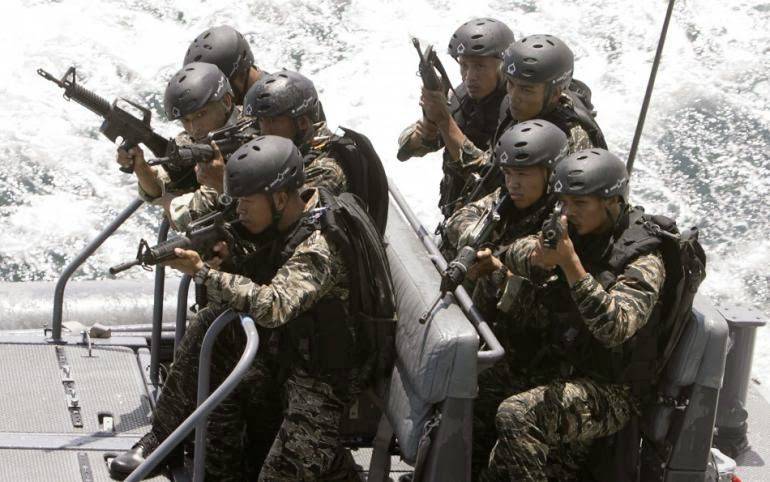
The unit is headquartered at Sangley Point and has eight units deployed throughout the Philippines, from the San Vicente seaport in the north to the Zamboanga naval base in the south of the Philippines. Each unit is attached to a naval compound and includes from 3 to 6 teams. The team consists of eight people and consists of the commander in the officer rank and seven fighters - parachutists, demolition men, divers. Acquisition of units is carried out by selecting the "best of the best", but in this case only a minimum number of candidates can pass all the entrance tests.
The training of the Philippine naval special forces is carried out according to the training programs of similar special units of the US Navy. Constantly undergo joint training of the American and Philippine Naval Special Forces. As for real operations, in them the special forces also demonstrate a high level of skills acquired during training. Maritime special forces are used for reconnaissance and sabotage operations against Islamic and Maoist radical groups. At the same time, the unit attacks “from the sea”, disembarking from rubber boats on small islands used by partisan groups as their bases, after which they kidnap or destroy leaders of partisan organizations and collect information.
Another elite unit of the Philippine Navy is the Marine Corps reconnaissance battalion. It is used for marine, air and ground operations. From the very beginning of the creation of the armed forces of the country, the Philippine military command paid great attention to the formation and training of the marine infantry units, since the American armed forces took the basis for the organizational development of the armed forces of the country, where the marine infantry always played one of the most important roles. Back at the beginning of the 1950's. a raid reconnaissance platoon was created as part of the marine battalion armament company. In 1954, the unit’s units underwent a course of airborne training, then the officers of the battalion of the marines began to train at the bases of the American marines. The raid reconnaissance platoon was the predecessor of the marines reconnaissance battalion. In 1972, a reconnaissance company commanded by Edgaro Espinoza, the future commander of the Philippines Marine Corps, was established on the basis of a platoon. From the first days of its existence, the reconnaissance battalion of the marines took an active part in opposing the Maoist and Islamist partisans on the islands of the southern Philippines.
In 1985, the reconnaissance company was transformed into the 61 reconnaissance company, consisting of three platoons. In 1980-s. It was used in battles against the New People’s Army in Basilan province. Marines also took part in the release of hostages in Central Mindanao. In 1995, a reconnaissance battalion of marines special forces was created. It consists of the headquarters of the battalion and three companies of special forces of the marines. Each company is divided into platoons, and a platoon, in turn, into teams of 4-6 fighters. The unit’s duties also include collecting information about militants, conducting rapid raids on the bases of partisan organizations, and releasing hostages.
Police special forces
In addition to special units subordinate to the Armed Forces of the Philippines, there are also “law enforcement special forces” in the country. These are the elite units of the Philippine National Police and special services. In the first half of 1983, the Philippine police were led by Fidel Ramos, a famous military and political leader of the country, the creator of a special-purpose army regiment. Naturally, he decided to apply his special forces experience and create a similar unit in the structure of the national police. Thus, the Special Action Forces (SAF), the Philippine police special forces, were created. Their official creation date is 12 May 1983. Under the leadership of Fidel Ramos and Renato de Villa, the formation of the group was started. Her direct organization was entrusted to General Sonny Razon and Colonel Rosendo Ferrer. The 149 operational officers of the Philippine police were selected, who were to undergo a special training course for special forces programs. Thus began the history of the police unit, which is currently the most famous formation of the Philippine police special forces.
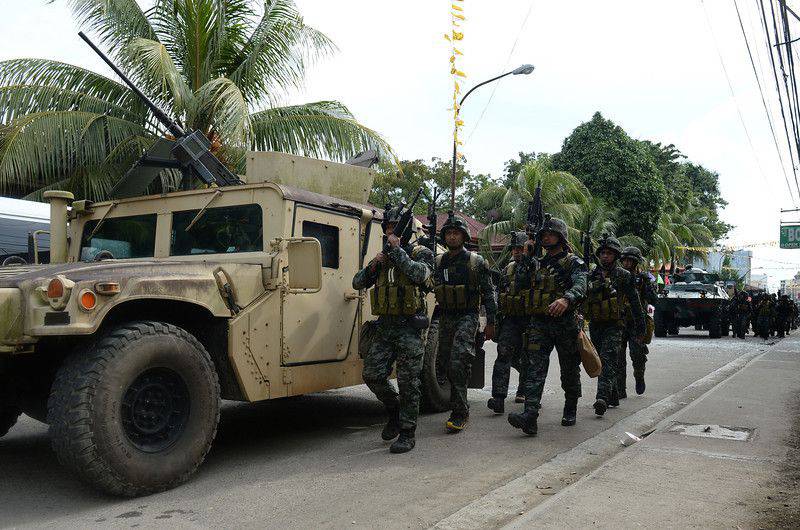
Initially, the police special forces were focused on the war with the New People’s Army and the separatists - Moro from the Moro Islamic Liberation Front, but in 1990. the tasks of the police special forces were expanded, and their competence included the fight against organized crime, terrorist activities in cities and police assistance in maintaining public order. the training of police special forces is carried out according to the methods of the British Special Air Service (SAS). For service in the special forces, interns or police officers are selected who initially undergo several military training courses, including parachute training, underwater operations and internal security.
Currently, the official functions of the police special forces of the Philippines are: organization and training of personnel, conducting counter-terrorist operations in urban and rural areas, waging an unconventional war with minimal control, conducting search and rescue operations and disaster relief, suppressing riots and acts of civil disobedience, support of other police and military units to carry out their tasks, ensuring the rule of law and security law and order on national highways and other highways. The unit commander is Superintendent Noli Talino.
The Philippine police special forces have their own helicopter squad. With the help of helicopters, not only is the transportation of special forces, but also reconnaissance operations. In addition, the special forces use Land Rover Defender jeeps, equipped with a machine gun in the first passenger seat and a machine gun in the back. Armored vehicles are used to move and suppress speeches in urban areas.
Nevertheless, despite the high level of training, the police special forces are suffering heavy losses in clashes with guerrilla organizations operating in the country. So, 27 in May 2013. 8 special forces soldiers were killed and 7 were injured after encountering an ambush by guerrillas of the New People’s Army in Cagayan. 25 January 2015 by the militants of the Islamic Front for the Liberation of Moreau killed 44 special forces - this unfortunate collision is considered one of the most serious losses to the Philippine government forces during special operations in peacetime. These losses made the Philippine commando think about further improving the training of special forces, as well as strengthening the ongoing intelligence operations that precede the operations of special units.
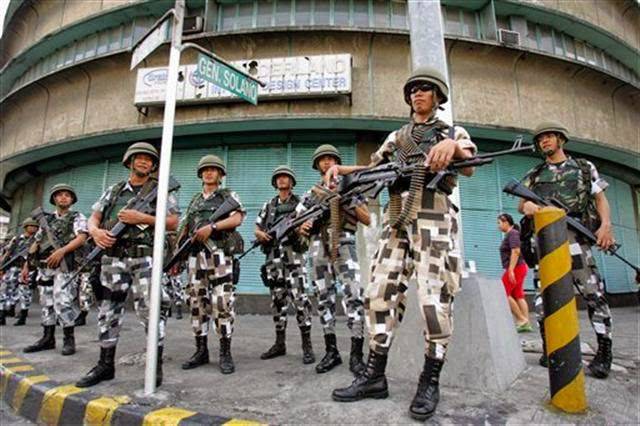
Finally, speaking of the Philippine law enforcement special forces, it is impossible not to mention the Special Response Group, which is part of the Security Group of the President of the Philippines. The Special Response Team was established by the Deputy Director of the Philippine National Police, Alan Purisima, to ensure the safety of the President and Government of the Philippines. Given the numerous attempts to carry out military coups in the country, its creation was of great relevance for the Philippine state. The training of this special unit is at an extremely high level, the most capable fighters from other police and military special units are selected here.
However, although all the above-mentioned Filipino special forces are well-trained, trained under the guidance of American instructors and considered among the best in the Asia-Pacific region, for many decades they have failed to defeat the rebel groups operating in the country. Currently, radical organizations operating in the country are the main internal opponents of the Philippine special forces. It should be noted that guerrilla formations also differ in quite good preparation, and most importantly - enjoy some support from the peasant population, which is caused by the numerous mistakes of the socio-economic and national policies of the Philippine government. Maoist and Islamist guerrillas control entire areas in the South of the Philippines, and the reconnaissance and sabotage raids of the Philippine special forces, as well as military operations of the ground forces and marines, do not damage them to such a level that would result in the termination or significant reduction in the scale of activities .
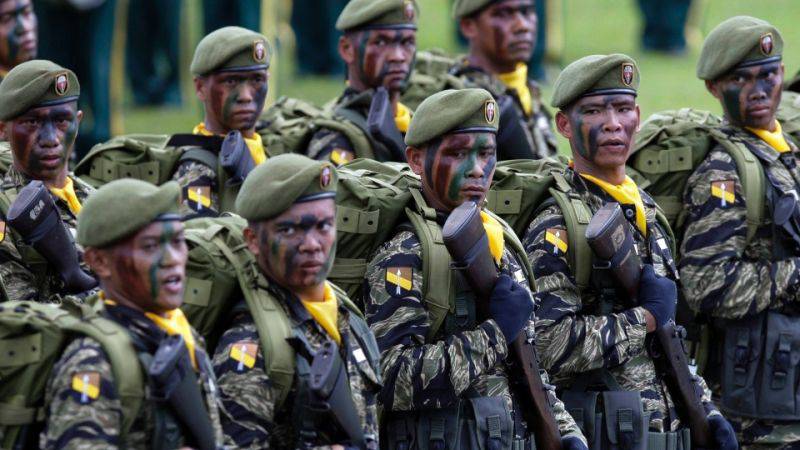
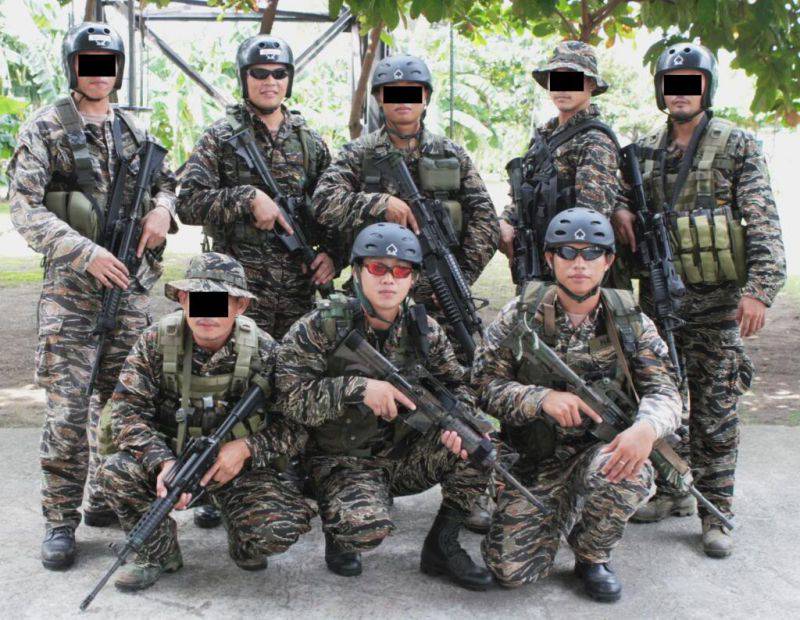
Information